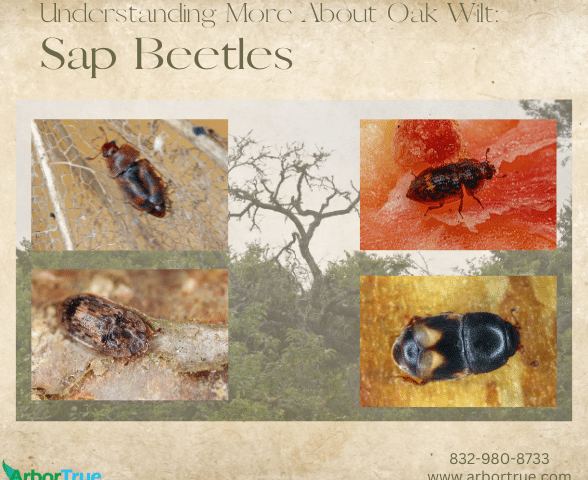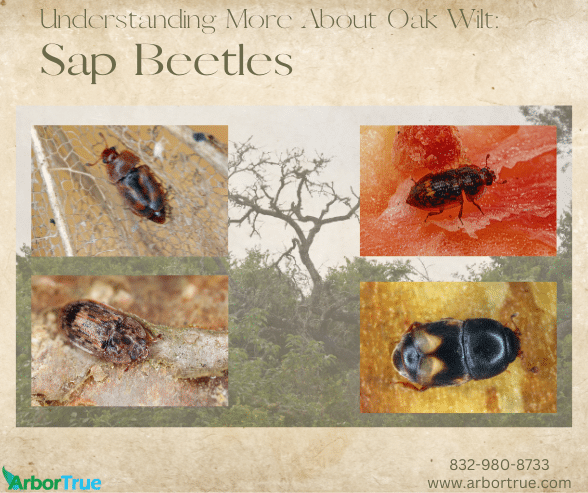
Compost Topdressing
February 28, 2024
Mushroom Monday: Jackson’s Slender Amanita
March 4, 2024
Understanding More About Oak Wilt: Sap Beetles
One topic you said you wanted to learn more about in our recent survey was trees. We recently had a post about Understanding More About Oak Wilt. This disease is very important to know about, and it is of course related to trees, so we thought we’d share some more information about one aspect of it: sap beetles.
In our oak wilt post, we mentioned that sap beetles can spread oak wilt by spreading the spores of the fungus that allow it to move from one tree to another, and that the term sap beetle refers to a category of beetle, rather than a specific species. There are thousands of species of sap beetles, with more than one hundred and fifty in North America.
Many species of sap beetle can spread oak wilt. Some genera include Colopterus, Pseudopityophthorus, Carpophilus, Cryptarcha, and Glischrochilus. These and other genera belong to the family Nitidulidae. The specific kinds of beetle that spread oak wilt will vary from one place to another.
Sap beetles carry oak wilt from infected trees to trees that are healthy. The sap beetles can detect chemicals that are given off by the fungal mats of oak wilt that is under the bark of some infected trees. Sap beetles are also drawn to wounds on trees, as they consume sap from them. These two things combine together to facilitate the spread of the disease.
An example of a genus of sap beetle in Texas are those in the genus Carpophilus. The species in this genus are very small. Their eyes and heads are relatively large for their flat, broad bodies and they have antennae. On some species, the elytra (forewings that cover other wings) are short and their abdomens can be seen. Some in the genus have bright colors and spots of yellow or red and others are dull in color. These beetles develop in the soil and are adults in the winter. Some species in the genus include: brachypterus, corticinus, hemipterus, and sayi.
Generally, sap beetles are small and dull in color (although some have colorful bands or spots), and they have antennae with knobs. The knobs on their antennae are one of the ways sap beetles can be identified. They are attracted to food sources with a strong scent such as fruit that is over-ripe and decaying vegetables. They also can smell the scent of the fungal mats, which has a fruity scent to them.
Although specifics vary among species, generally, sap beetles go through four stages in their lives. They start out as eggs (which are small and white), then become larvae, then develop into pupae, and finally become adults.
Sap beetles can live from around two to two and a half months. Their eggs are generally laid on a food source but can also be laid in the soil. As eggs and larvae, they are generally in the food source, but then move to the soil where the pupae develop.
Sap beetles consume a variety of different things depending on the species. They consume fruit, fungi, sap, and plant material that is decaying among other things.
Certain things attack sap beetles. Examples are a parasitic nematode that attacks one species and a wasp.
Sap beetles are important in the spread of oak wilt disease, because they are the primary way oak wilt will spread above ground. Because oak wilt can be spread easily, and it is very devastating, prevention of oak wilt is very important.
If you think your oak trees might have oak wilt, or some other condition, contact a qualified arborist. They can help determine what is affecting your trees and advise you on a course of action.




